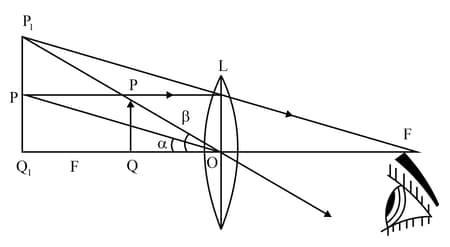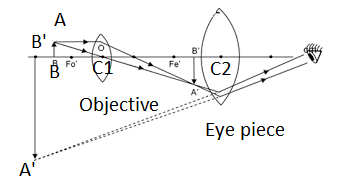State the condition under which a large magnification can be archived in an astronomical telescope.
Important Questions on Eye and Optical Instruments
Draw a labelled ray diagram of an image formed by a refracting telescope with final image formed at infinity Derive an expression for its magnifying power with the final image at infinity.
The figure shows the image formation of an object in simple microscope.

Derive an equation for magnifying power of the simple microscope.
An astronomical telescope has an objective lens of focal length and an eyepiece of focal length . Find the angular magnification of the telescope.
Draw the ray diagram of an astronomical telescope when the final image is formed at infinity. Write the expression for the resolving power of the telescope.
A small telescope has an objective lens of focal length and an eyepiece of focal length . What is the magnifying power of the telescope for viewing distant objects when the telescope is in normal adjustment.
A small telescope has an objective lens of focal length and an eyepiece of focal length . What is the magnifying power of the telescope for viewing distant objects when the final image is formed at the least distance of distinct vision.

The focal lengths of objective lens and eye lens of a Galilean Telescope are respectively 30 cm and 3.0 cm. Telescope produces virtual, erect image of an object situated far away from it at least distance of distinct vision from the eye lens. In this condition the Magnifying Power of the Galilean Telescope should be :
